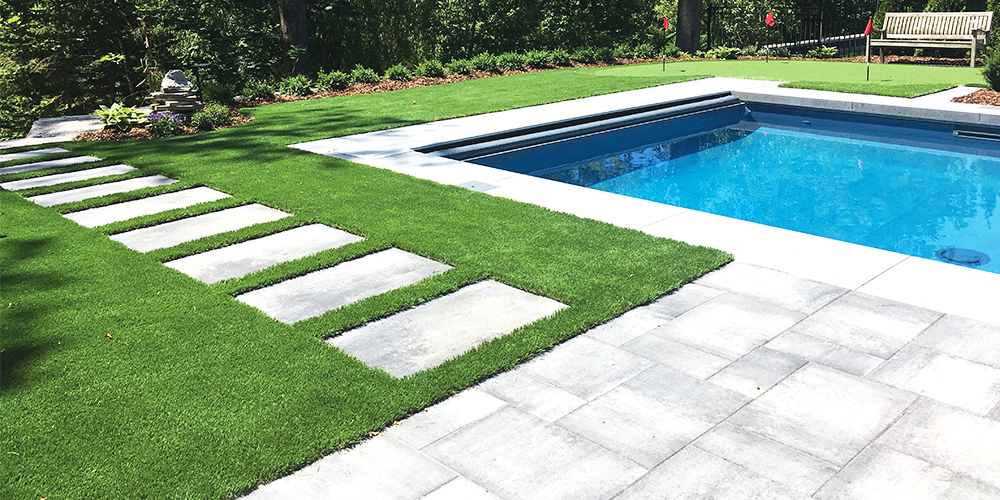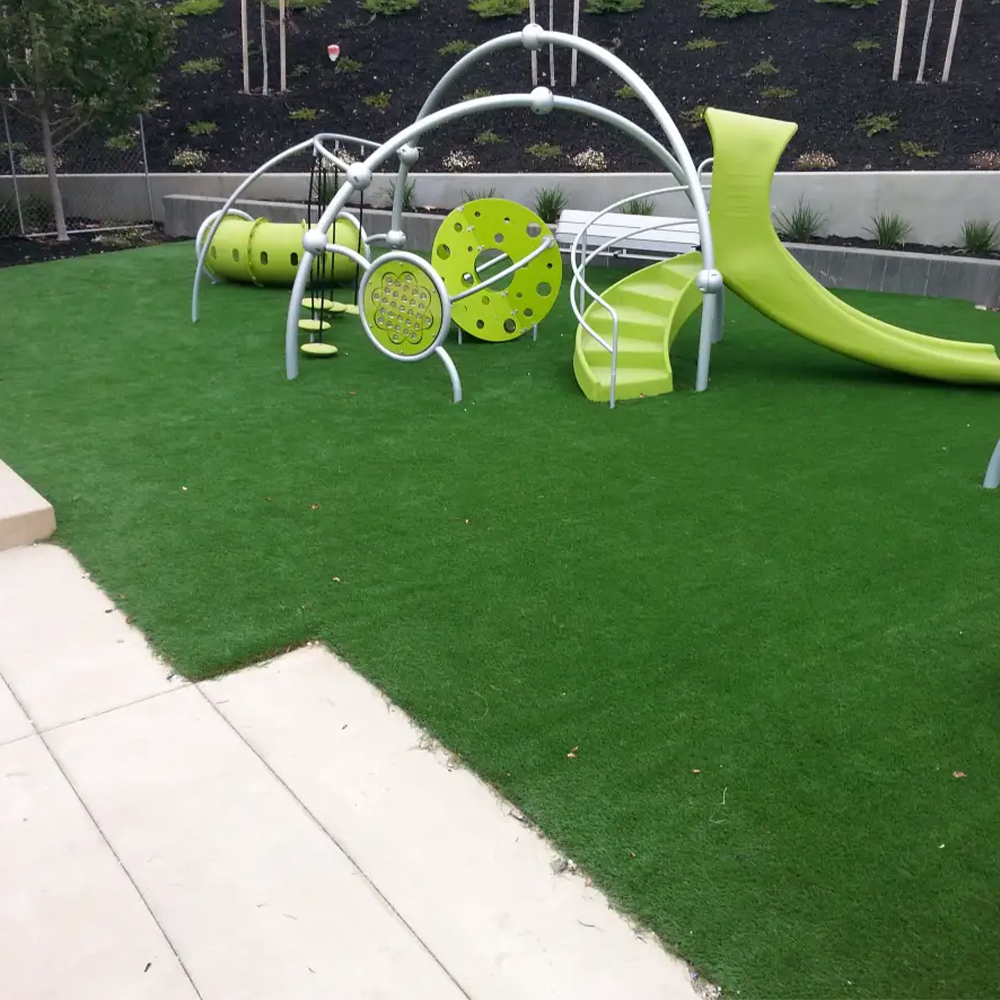Reputable Phoenix Turf Companies Providing High-End Synthetic Grass Installation
Reputable Phoenix Turf Companies Providing High-End Synthetic Grass Installation
Blog Article
Delve Into the Environmental Benefits of Opting for Artificial Turf Solutions
The fostering of fabricated lawn remedies offers an engaging possibility to address pushing environmental challenges. By dramatically minimizing water usage and decreasing the application of unsafe chemicals, these choices not just advertise sustainable landscape design however additionally protect neighborhood communities. Furthermore, the lower carbon footprint associated with decreased upkeep tasks adds to a more sustainable approach to land monitoring. The ramifications of these benefits prolong past plain conservation efforts, increasing inquiries about their lasting impact on environment preservation and general ecological equilibrium. Checking out these measurements exposes a complicated interaction worth considering.
Water Preservation Perks
One of one of the most considerable benefits of synthetic turf is its ability to conserve water. Conventional lawn lawns need substantial irrigation, specifically in locations vulnerable to dry spell or water limitations. On the other hand, synthetic grass does not need watering, significantly decreasing the general need for water resources. This feature is especially useful in deserts where water scarcity is a pushing problem.
By getting rid of the requirement for routine watering, man-made lawn adds to sustainable landscape practices and helps reduce the environmental impact of too much water intake. The preservation of water extends to the reduction of drainage, which can lead to dirt erosion and river contamination.
In addition, the installation of synthetic grass allows homeowners and towns to allocate water resources a lot more successfully, focusing on vital usages such as alcohol consumption water and agriculture. The shift in the direction of synthetic grass not just promotes responsible water usage yet also aligns with wider environmental objectives focused on protecting natural deposits.
As areas increasingly prioritize sustainability, the water conservation benefits of synthetic grass offer a compelling situation for its fostering in household and business landscaping jobs.
Minimized Chemical Use
The change to synthetic grass substantially decreases the reliance on chemical treatments frequently made use of in natural yard maintenance. Conventional lawn monitoring usually entails the application of herbicides, pesticides, and fertilizers to promote growth and control insects. These chemicals can pose risks to human wellness, local wild animals, and the setting, adding to soil and water contamination.
On the other hand, synthetic grass removes the need for these dangerous compounds. As soon as installed, it calls for very little upkeep, mainly including routine cleansing and occasional infill replenishment. This decrease in chemical use not only profits the instant environment yet likewise adds to more comprehensive environmental stability. By lessening the launch of synthetic compounds into the ecosystem, man-made lawn advertises much healthier dirt and water supply.
Additionally, the lack of chemical overflow associated with synthetic grass installments assists shield local rivers from pollution, sustaining aquatic life and keeping biodiversity. Arizona turf. As neighborhoods increasingly focus on sustainable techniques, going with synthetic grass presents a sensible remedy that lines up with environmental conservation objectives. Via this change, residential property proprietors can appreciate rich environment-friendly rooms without endangering ecological health and wellness, paving the way for a much more sustainable future
Reduced Carbon Impact

In addition, the installment of synthetic grass can result in significant water preservation. Natural lawns need considerable quantities of water for watering, which not only includes to the carbon footprint related to water removal and therapy yet additionally strains regional water resources. In comparison, artificial lawn needs very little upkeep, requiring no watering, thereby substantially lowering water use and its linked energy prices.
In addition, the long life of synthetic turf contributes to its reduced carbon influence. With a lifespan of up to 15 years or even more, the requirement for constant substitutes is reduced, resulting in less waste and reduced energy usage in manufacturing and getting rid of traditional yard alternatives. In general, synthetic grass offers a lasting alternative for environmentally mindful landscape design.
Habitat Conservation
Habitat conservation is a critical consideration in the debate over landscape design options, especially when contrasting synthetic grass to all-natural yard. All-natural grass lawns often call for considerable maintenance, consisting of using pesticides, fertilizers, and herbicides, which can negatively impact local communities. These chemicals can seep into the dirt and rivers, harming indigenous plants and animals and disrupting neighborhood habitats.
Synthetic turf removes the need for dangerous chemicals, thereby securing nearby wild animals and maintaining the integrity of surrounding communities. The installment of artificial turf can lead to the conversion of previous yard locations right into even more biodiverse landscapes, such as pollinator yards or indigenous plant areas, which can sustain regional wild animals.
Inevitably, the transition to man-made lawn not only conserves water and decreases upkeep efforts but likewise cultivates an extra harmonious partnership between human activities and the native environment, advertising environment conservation at the same time.
Long-Term Sustainability
Long-term sustainability is a crucial consider evaluating the advantages of fabricated turf over traditional yard yards. Among one of the most considerable benefits of man-made lawn is its useful link longevity; it can last up to 15-20 years with minimal upkeep, whereas natural turf needs regular reseeding and replacement. This durability lowers the demand for constant resources, such as water, plant foods, and pesticides, which are vital for maintaining a healthy turf lawn.
Furthermore, man-made grass adds to a use this link reduction in carbon discharges connected with lawn treatment tools. Traditional lawns usually need gas-powered lawn mowers, leaners, and blowers, every one of which add to air contamination. Phoenix turf companies. In contrast, synthetic grass gets rid of the demand for such equipment, advertising a cleaner environment
In addition, the manufacturing of synthetic grass progressively makes use of recycled materials, enhancing its sustainability profile. As makers take on environmentally friendly practices, the ecological footprint of artificial turf remains to reduce.

Verdict
The fostering of man-made grass services presents significant ecological advantages, consisting of considerable water conservation, reduced reliance on damaging chemicals, and a lower carbon impact. In addition, synthetic grass help in protecting natural habitats by minimizing land disruption and promoting long-term sustainability via using durable materials. Jointly, these elements emphasize the potential of man-made lawn to contribute favorably to ecological health and wellness and offer a sensible option to traditional landscape design methods in a progressively resource-conscious world.
In comparison, fabricated grass does not require watering, substantially decreasing the total demand for water sources. By minimizing the release of artificial compounds into the environment, fabricated grass advertises much healthier dirt and water systems.
Additionally, the setup of fabricated turf can result in significant water conservation. In comparison, fabricated turf needs very little upkeep, needing no watering, therefore considerably reducing water use and its address linked power costs.

Report this page